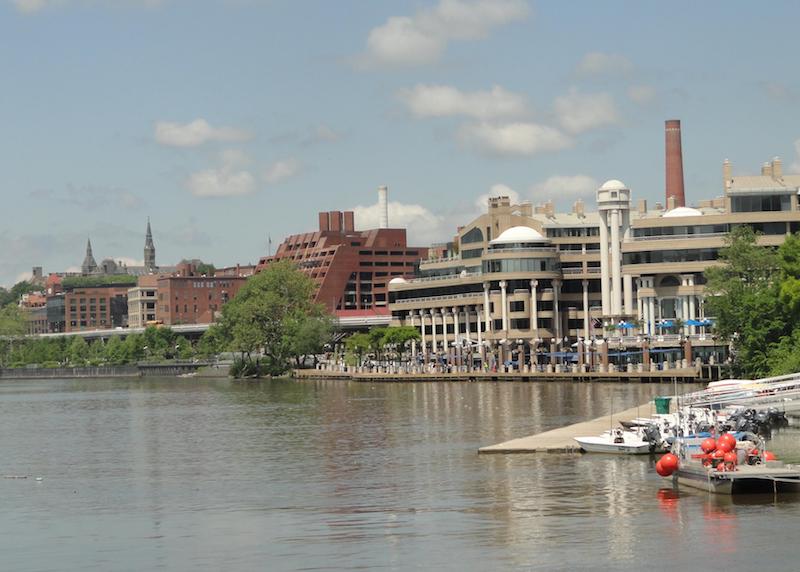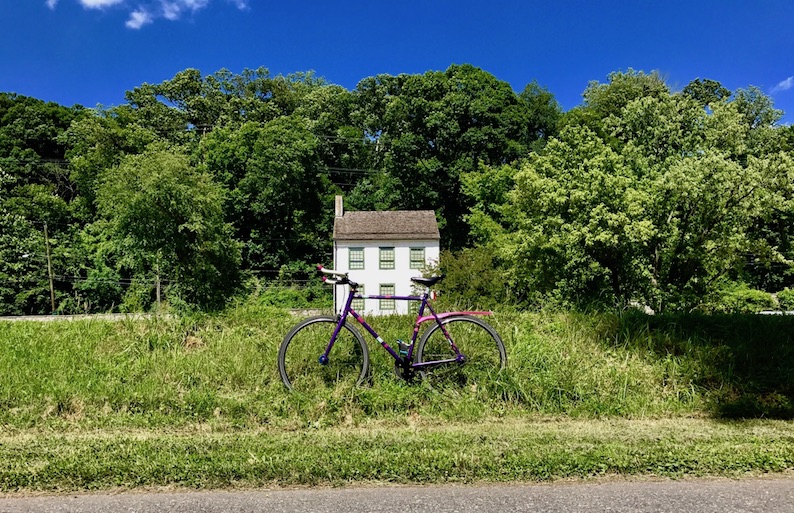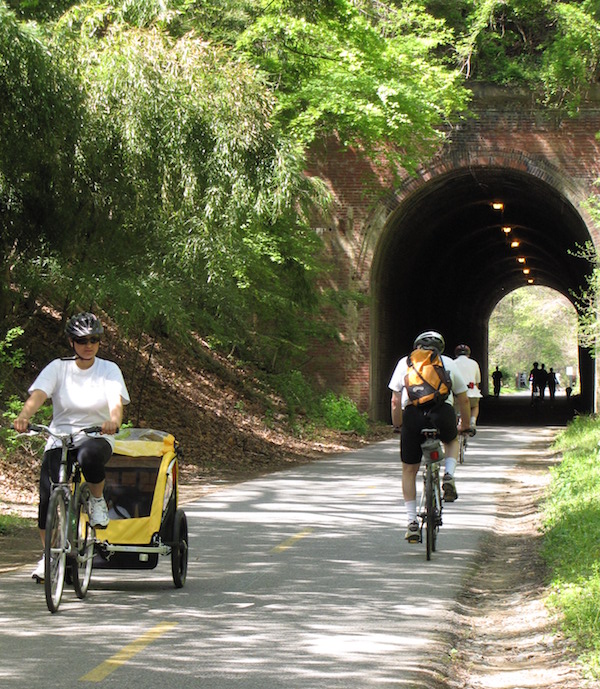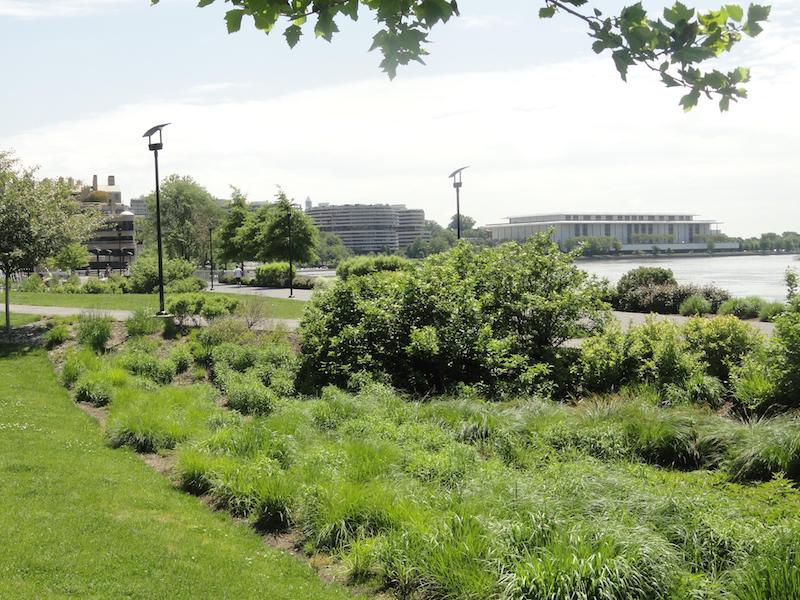Maryland and Washington, D.C.’s Capital Crescent Trail

Trail of the Month: June 2017
“You’re going through the woods and then you’re in Georgetown. There’s a magical element in that.”
Forming an emerald arc around the northern and western borders of the District of Columbia, the Capital Crescent Trail connects Washington to its Maryland suburbs. The pathway is so lushly wooded that, at times, it might be easy to forget the thrum of the nation’s capital lies just over the trees. But a glance over the shoulder while pedaling along the Potomac River provides a nice view of the iconic Washington Monument and a reminder of the city’s closeness.
“It feels very removed from city life,” says Liz Thorstensen, vice president of trail development for Rails-to-Trails Conservancy (RTC). “You’re going through the woods and then you’re in Georgetown. There’s a magical element in that.”

The trendy Georgetown neighborhood is where 7 miles of paved trail begins, just a few blocks from the prestigious John F. Kennedy Center for the Performing Arts and the infamous Watergate complex. From there, it quickly heads into its leafy surroundings on its way north to the popular dining and shopping area of Bethesda, where it seamlessly connects to a crushed-stone pathway known as the Georgetown Branch Trail that continues another 4 miles to Silver Spring. A large swath of the rail-trail opened in 1996, and over the past two decades, it has helped to shape its environment.
“I lived in Bethesda in 1994-95 when the trail was just starting to get under construction,” says Chuck Kines, trail planner for the Montgomery County Department of Parks, which manages the trail between the District line and Bethesda. “That area of Bethesda was dead. It’s very satisfying 21 years later to see a lot of trail-oriented development in that area. I don’t know if the trail was ‘the’ catalyst in the revitalization of southern Bethesda, but it was definitely a player. Now, when developers build adjacent to the trail, a selling point is trail access.”
A Local Favorite
The trail offers a near-perfect blend of community connector and recreational asset. Its first few miles are nestled within a national historical park, tucked between the Potomac and the scenic C&O Canal. The canal’s towpath closely parallels the Capital Crescent before eventually veering off to the northwest on a winding journey of nearly 185 miles to Cumberland, Maryland.

A meeting point for the two trails at Fletcher’s Boathouse—which has been in operation since the 1850s—is one of Peter Harnik’s favorite spots on the route. A longtime bicycling and trail advocate, Harnik came up with the trail’s name and began shepherding the trail’s development while at the Washington Area Bicyclist Association (WABA). An adjacent stone house overlooking the trail is the oldest structure on the canal, and a rental shop offers canoes, kayaks, rowboats and even hydro bikes to get a water’s eye view of the landscape.
Like anything in Washington, the trail has a rich and colorful history. It traces the route of the former Georgetown Branch of the Baltimore and Ohio Railroad, which opened in 1910. The line serviced freight trains for 75 years, including carrying the coal that provided electricity for Georgetown’s streetcars and powered a steam plant that warmed federal buildings like the White House. Limestone was even once ferried on the tracks for the construction of the Lincoln Memorial.

Some of the trail’s best features are nods to its railroad past. Near the D.C.-Bethesda border is the Dalecarlia Tunnel, which Harnik says is “total fun.” The 340-foot-long brick structure is especially welcome as a cool respite on hot summer rides. Be sure to look for the unusual man-sized cutouts in the tunnel’s sides that were used if a person on foot needed to get out of the way of a passing train. Another highlight is the trestle over Rock Creek Park, the view from which Kines enthuses is “spectacular.”
The line was officially abandoned by CSX in 1986, coincidentally in the same year that RTC opened its doors, and having a rail-trail in its backyard proved fortuitous for the burgeoning organization.
“I was vice president of RTC and lead organizer of the Coalition for the Capital Crescent Trail,” says Harnik of that time period. “The trail became the testing ground for the national RTC office. We were giving ideas and advice around the country and testing it out locally to see if it would work.”
After two years of negotiation with the railroad, Montgomery County purchased the right of way with the encouragement of local trail advocate John Dugger, who helped secure federal funding for the project through his work with Coalition for the Capital Crescent Trail. A memorial plaque in honor of his leadership sits trailside.
When segments of the trail began opening a few years later, “Everybody was totally psyched,” says Harnik. “It was like the land rush in Oklahoma. Everybody wanted to get out and use it. Each time there was a ribbon cutting, there was tremendous enthusiasm.”
A National Model

Today, the well-loved trail—visited by an estimated 850,000 people last year—is serving as a springboard for the next generation of trails. The newly formed Capital Trails Coalition, led by WABA and supported by the work of RTC and the National Park Service, envisions some 800-miles-plus of interconnected trails, including more than 60 miles of rail-trail, that will encircle D.C. in a bicycle beltway and extend outwards into Maryland and Virginia.
“The Capital Crescent Trail is a pretty vital connector for the D.C. trail network,” says Katie Harris, the coordinator for the Capital Trails Coalition. “It’s a shining example of what the entire regional trail could be composed of. There’s been a lot of public support for the Capital Crescent and others like the W&OD, the Custis Trail and the Mount Vernon Trail. They’ve been on the ground long enough now that there’s less of convincing people of an idea. Demand is high because people are using and loving these trails.”

Underway this summer is an effort to map all the existing and potential local multiuse trails that meet a set of trail standards developed by key stakeholders in the Capital Trails Coalition, which currently comprises 45 organizations. This “greenprint” for the whole system will help guide the strategy for the project’s implementation, which is expected to be a game changer for the region, providing healthy, low-stress access to open space and reliable transportation for people of all ages and abilities.
“Once that’s complete, we’ll have a better idea of what the regional network will look like,” says Thorstensen. “Everyone’s waiting with baited breath.”
The Capital Trails Coalition seeks to create a world-class network of multiuse trails that are equitably distributed throughout the Washington, D.C. metropolitan region. Learn more.

Donate
Everyone deserves access to safe ways to walk, bike, and be active outdoors.
